Seeking style, safety and security for your garden boundary? We line up the different fence types available and explore their pros and cons
If you're looking to enclose your garden or break it into different zones, choosing the right fence type is the key to success. We take a look at the most popular options
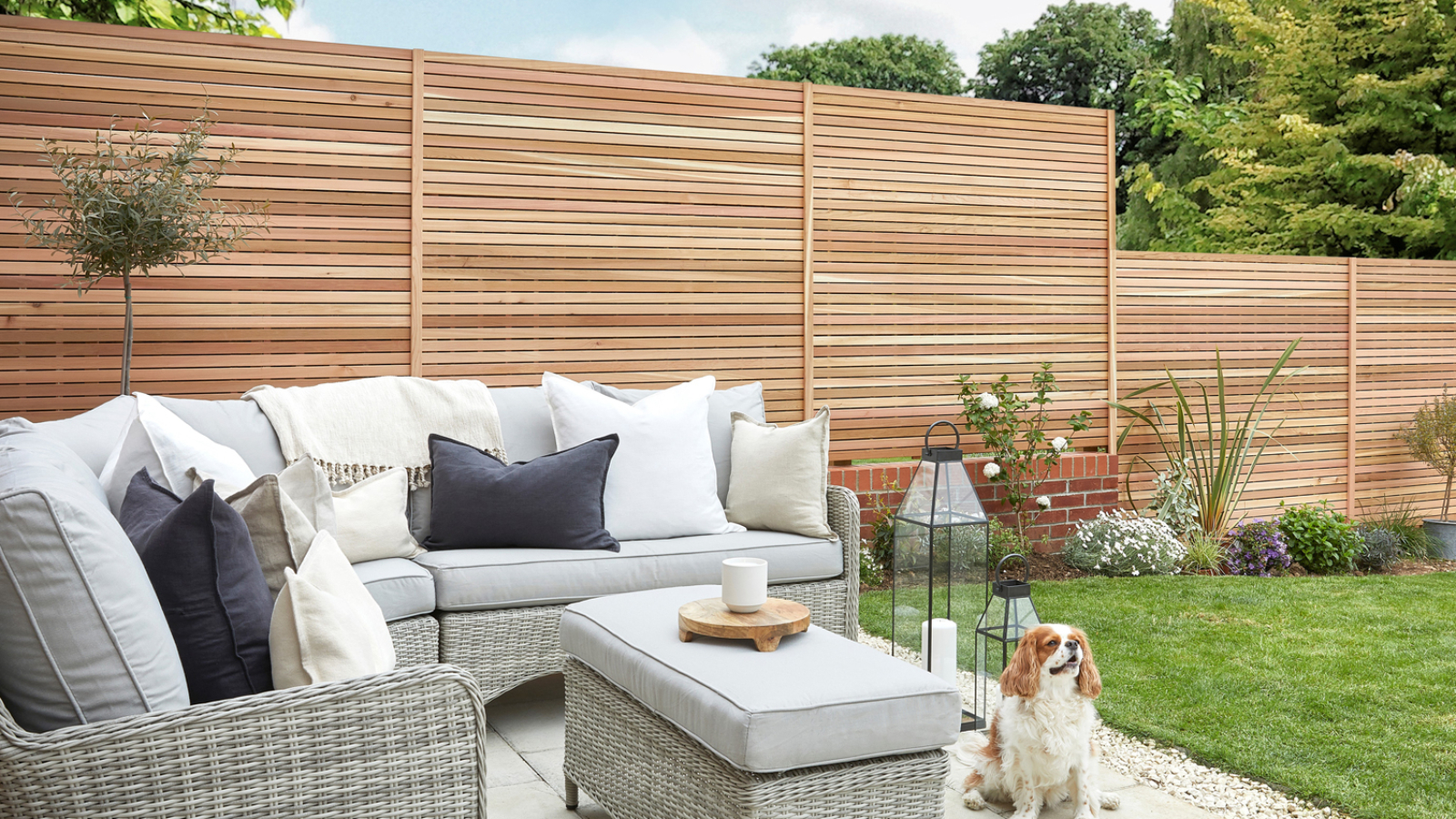
Whether you're driven by the need for more privacy or a desire for something decorative, there's a variety of fence types to choose from when looking for garden fence ideas.
As with most home related purchases, your decision will guided by budget and size required, as well as the the look and feel of both your garden and your house. But, with so many options available, how do you choose?
From something more contemporary, to a little more classical, we've rounded up the most popular fence types and expert advice to help you pick the right products to make your garden boundary safe, stylish and secure.
Fence types explained
Rather than it being an afterthought, looking at the types of fence you can use in your garden design is a key starting point when finalising your landscape design, especially if the fence will be one of your main views from your garden, or even play an integral part in your kerb appeal.
The most common fence types available are:
- Featherboard (also known as close board)
- Lap panel fencing (also known as larch lap)
- Slatted fencing
- Hit and miss fencing
- Picket fencing
- Combination fencing
- Composite fencing
- Natural screening
- Decorative panels
But what is the most popular type of fence?
"Timber remains the most popular type of fencing, prized for its natural beauty and ability to complement garden landscapes," says Leigh Barnes, fencing expert at Jacksons Fencing. This also may be partly down to the number of styles it's available in, and the fact some options are less expensive.
Bring your dream home to life with expert advice, how to guides and design inspiration. Sign up for our newsletter and get two free tickets to a Homebuilding & Renovating Show near you.
"Timber fencing is available in a versatile range of styles, from solid panels like featherboard and tongue and groove, through to semi-solid options such as hit and miss or venetian slatted panels," explains Leigh. "These fences offer a strong combination of visual appeal, privacy, and security, making them a preferred choice for many homeowners.
"Traditional closeboard or vertical board fencing remains the most popular choice, thanks to its durability, full privacy and versatility across different garden types," agrees Jenny Davis, head of marketing at Forest Garden.
"That said, we’ve also seen a significant rise in demand for more contemporary styles like slatted panels, particularly in smaller, design-led outdoor spaces where people want their fencing to be as visually considered as the rest of the garden," she adds.
Buy popular fence types
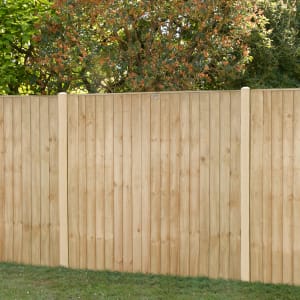
1830 X 1540mm 6ft X 5ft Multi Packs of closeboard fence panels for privacy
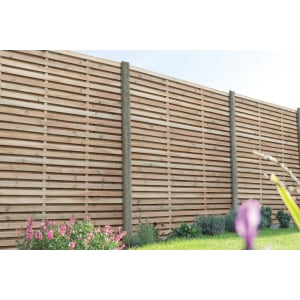
An 1800 X 1800mm - 6 X 6ft contemporary double slatted fence panel
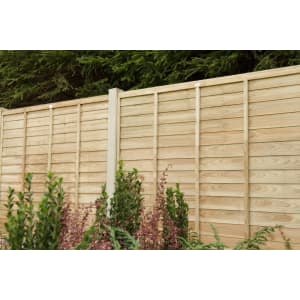
A 6 X 6ft pressure treated overlap fence panel with extra uprights for stability

Leigh has over 20 years of experience in the timber and construction industry. Since joining Jacksons Fencing in 2019, he has been instrumental in leading the retail team, focusing on driving the timber division side of the business.
How to choose your fence type
Before we take a look in more detail at the different fence types, it's important to have clear in your own mind what it is you need. This way it will become easier to identify which type will suit your project the most.
"Start by deciding what your fence needs to do," recommends Jenny Davis. "Is it about privacy, design, security, or simply marking a boundary?
"Think about how exposed your garden is as well," she adds, "and whether you want something low-maintenance. Also think about how the fence fits with your house and outdoor space. It’s a practical decision, but also a big part of your garden’s overall look and feel," advises Jenny
"It’s also important to focus on long-term value rather than just the upfront cost of installing a fence," adds Leigh Barnes. "High quality, pressure-treated timber that comes with a long guarantee may cost more initially but can save money over time due to its durability," he suggests.
Practical tips are important too, says Leigh, telling us:
- Including gravel boards at the base of the fence helps prevent rot and extends the life of both panels and posts
- Hiring a reputable installer is also crucial, as low quality installation is a common reason fences fail prematurely
- Using stainless steel fixings ensures that screws and fittings do not rust, further enhancing the longevity of your fence
And of course the end result needs to be balanced too.
"It's important to consider both your garden’s functional needs and aesthetic preferences," says Leigh. "For example, solid panels provide privacy, semi-solid panels allow for airflow, and slatted designs let in light."
Once you're clearer on your needs, then it becomes easier to weigh up the pros and cons for different fence types to make sure your money is well spent.
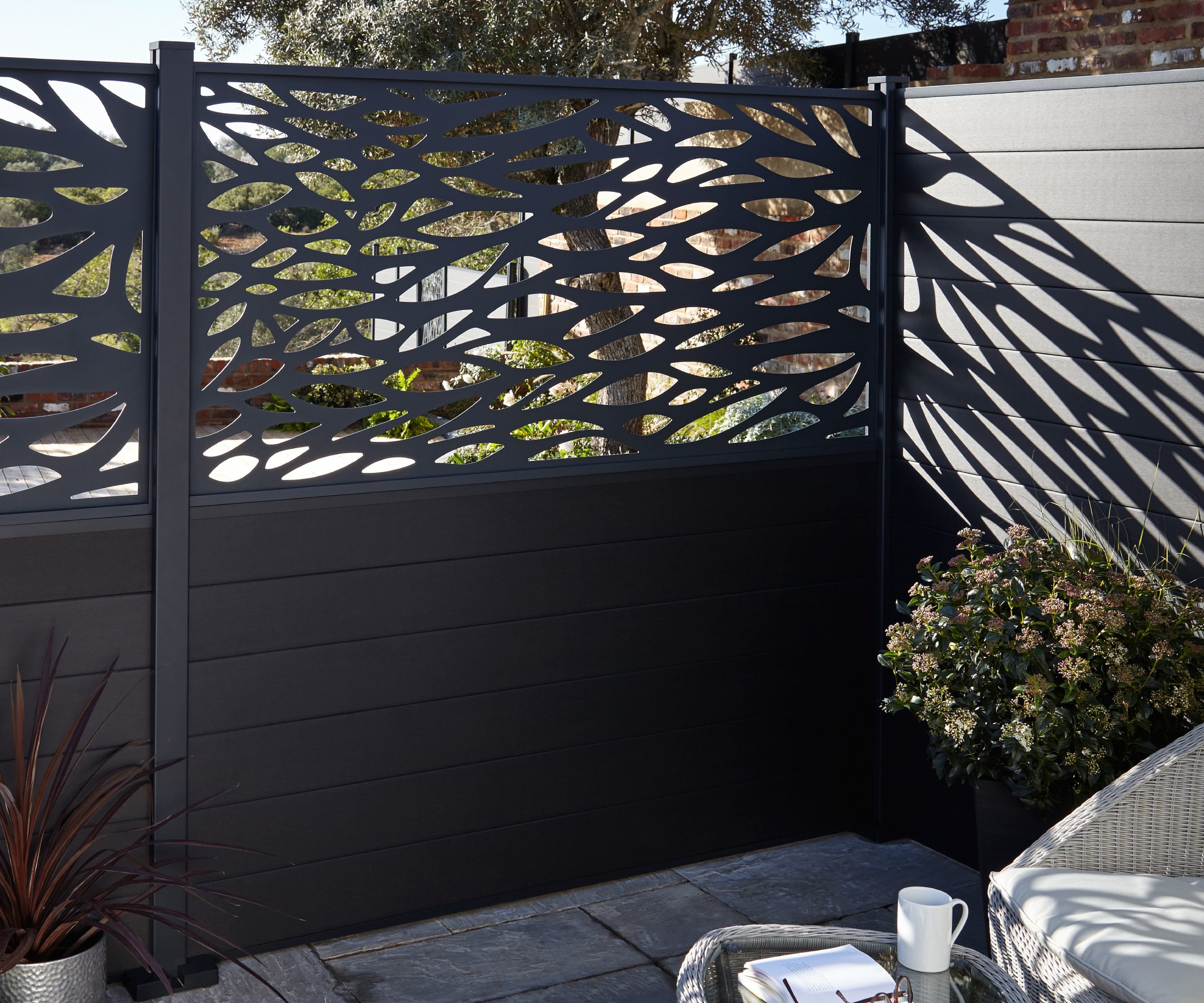
Pros and cons of the different fence types
So what are the pros and cons of the different fence types? With cost, appearance, purpose and functionality at the core of your decision making, we asked the experts how the options stand up.
Overall, it's not surprising that Leigh Barnes tell us, timber remains the best option for a number of reasons.
"It blends naturally with the garden environment, is versatile in terms of style, and is a great option in terms of longevity option when properly treated," he says. "High quality timber that is kiln-dried and pressure-treated can last over 25 years if installed correctly, making it a durable choice that can rival or even exceed the lifespan of composite or metal fencing.
However, it's not without risk if you don't buy well he warns. "The main drawback is that untreated or poorly treated timber is vulnerable to rot and insect damage, which can significantly reduce its longevity if not addressed."
But let's look in more detail at all the different fence types, some of which aren't made of timber.
1. Featherboard fencing
Featherboard fencing is also often called closeboard. It is a really popular fencing style, being sturdy and strong. It is made up of overlapping vertical 'featheredge' boards and offers good privacy levels being solid, with no gaps between the wooden sections.
"For maximum privacy, solid timber panels such as featherboard or tongue and groove are ideal," says Leigh Barnes. "These panels completely block sight lines, preventing outsiders from seeing into the garden, and also help increase overall security."
"Closeboard panels are robust, offer full privacy and suit most garden styles," agrees Jenny Davis. "but they’re heavy and can be harder for homeowners to install themselves," she notes.
Featherboard comes in various sizes and heights, but 6ft panels are the most common
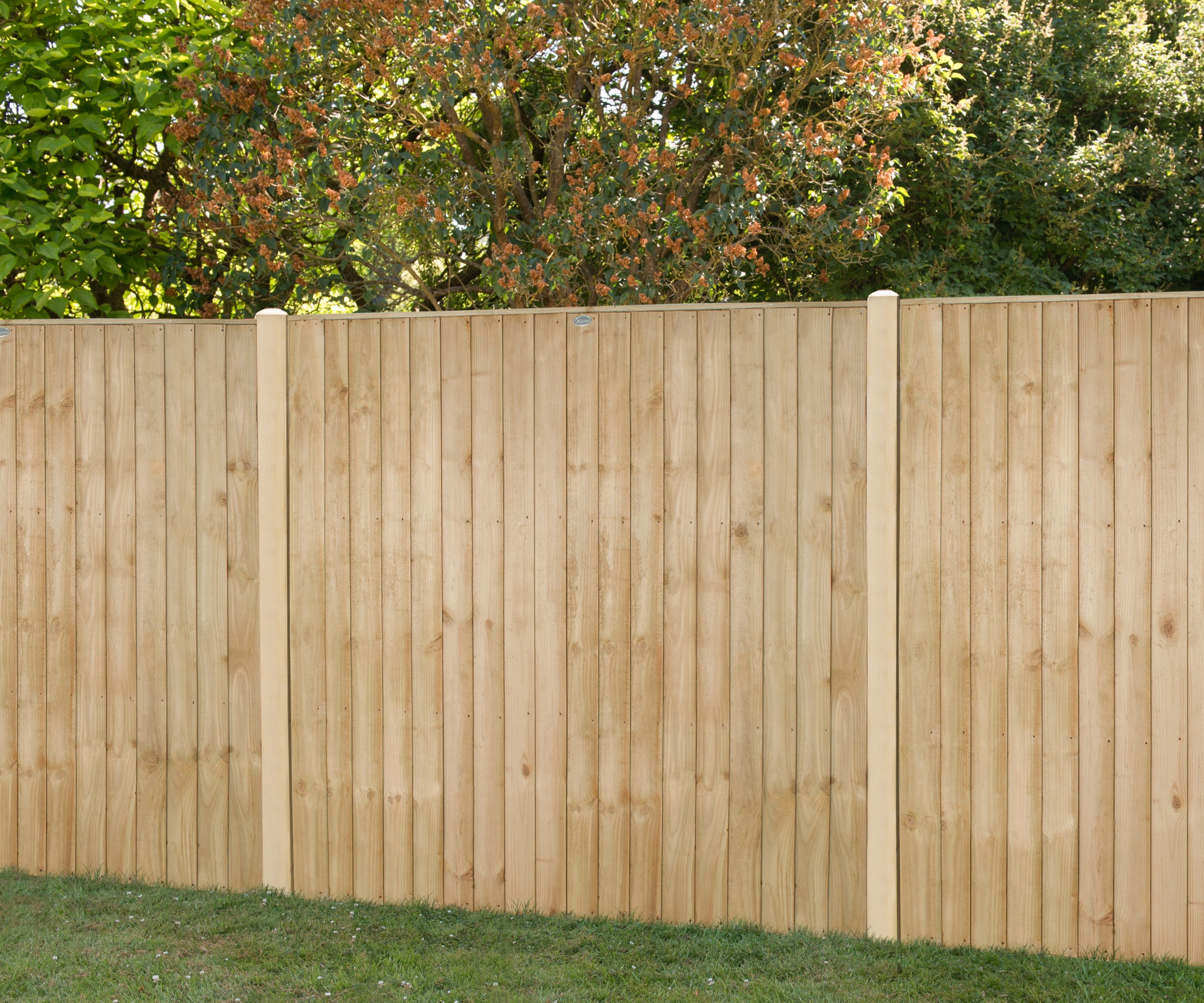
Pros and cons: featherboard fencing
- Suits a wide range of garden styles
- Sturdy construction (when used with good fence posts)
- High privacy levels
- Depending on its height, offers security
- Will contain pets
- Good shade
- Close panels with no gaps can be prone to wind damage in storms
- Will need regular staining and maintenance
- More expensive than lap fencing
2. Lap fence panels
Often referred to as 'larch-lap' this type of fencing is affordable so is perfect for anyone worried about the cost to install a fence. It is also ideal for those after privacy and ideal for painting or staining to blend in with the rest of the garden.
It is a good pairing with more traditional garden schemes and boards are often 'waney' edged, meaning they are a little wavy in their finish as opposed to sharp and crisp.
They tend not to be quite as stable as some other fencing types and for some doesn't hold quite the same aesthetic appeal.
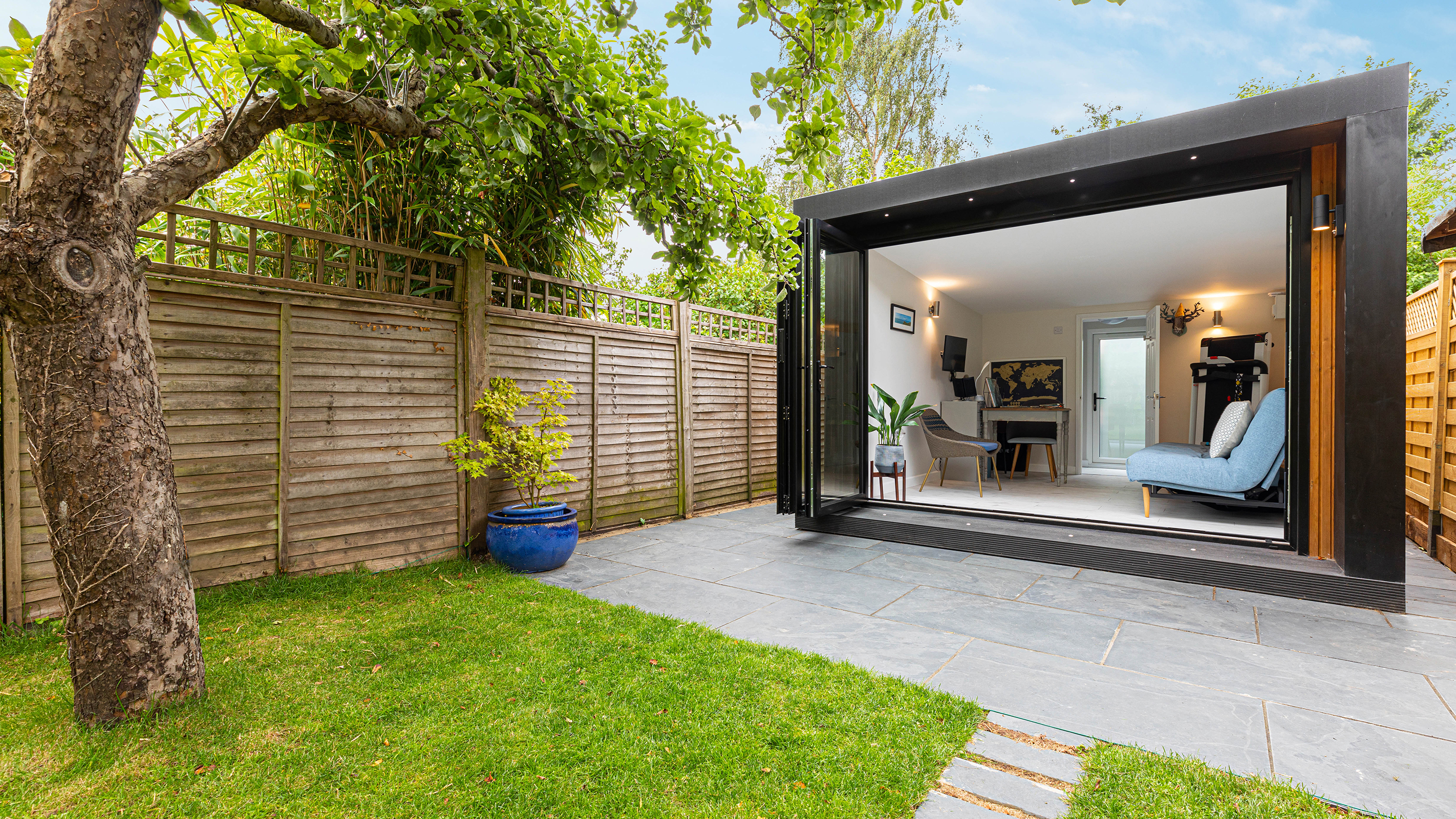
Pros and cons: Lap fence panels
- Cost effective
- Can be painted or stained to blend in
- Offers good privacy levels
- Perfect for keeping pets in
- Tends not to be as long-lasting or strong as featherboard fencing
- Lacks aesthetic appeal
- Can need regular maintenance
3. Single slatted fencing
If you're after more modern or contemporary garden ideas, but still prefer timber, slatted fence panels are one option to consider.
"Slatted panels, sometimes referred to as Venetian-style or batten fencing, are ideal for contemporary gardens or urban courtyards," agrees Jenny Davis. "They offer a stylish, open feel and are great for zoning or light screening, but they don’t provide full privacy or much noise reduction, so they work best in lower-traffic areas or alongside planting," she advises.
"The main advantages of these contemporary designs are that they are stylish, customisable, and light-permeable, however, installation requires care to prevent rattling," adds Leigh Barnes.
The linear form of these panels can also be perfect for those after small garden design ideas, but there are still additional pros and cons to consider:
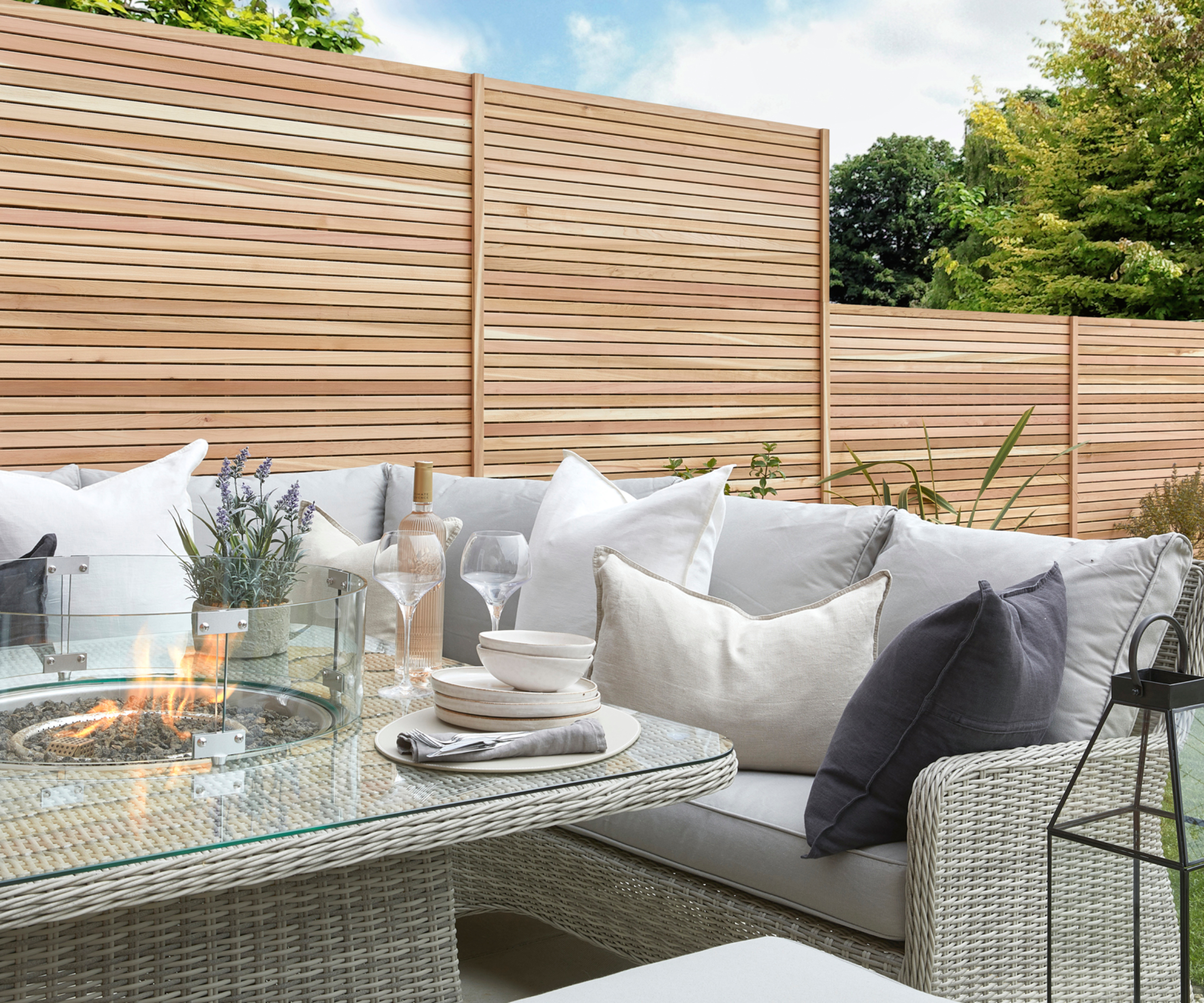
Pros and cons: single slatted fencing
- Sleek, modern appearance
- Can make small gardens feel bigger
- Spaces between slates allows wind to pass through meaning it is less buffeted in storms
- Offers less privacy than other solid fence types
- Weeds may peek through gaps
- More expensive
4. Double slatted fencing
This fencing style is ideal for contemporary gardens too, but unlike single slatted fence panels, double slatted versions have slats mounted alternately to the front and back meaning more privacy can be achieved.
In terms of disadvantages, double slatted fence panels tend to be more expensive than lap or featherboard fencing and can be tricky to stain and paint.
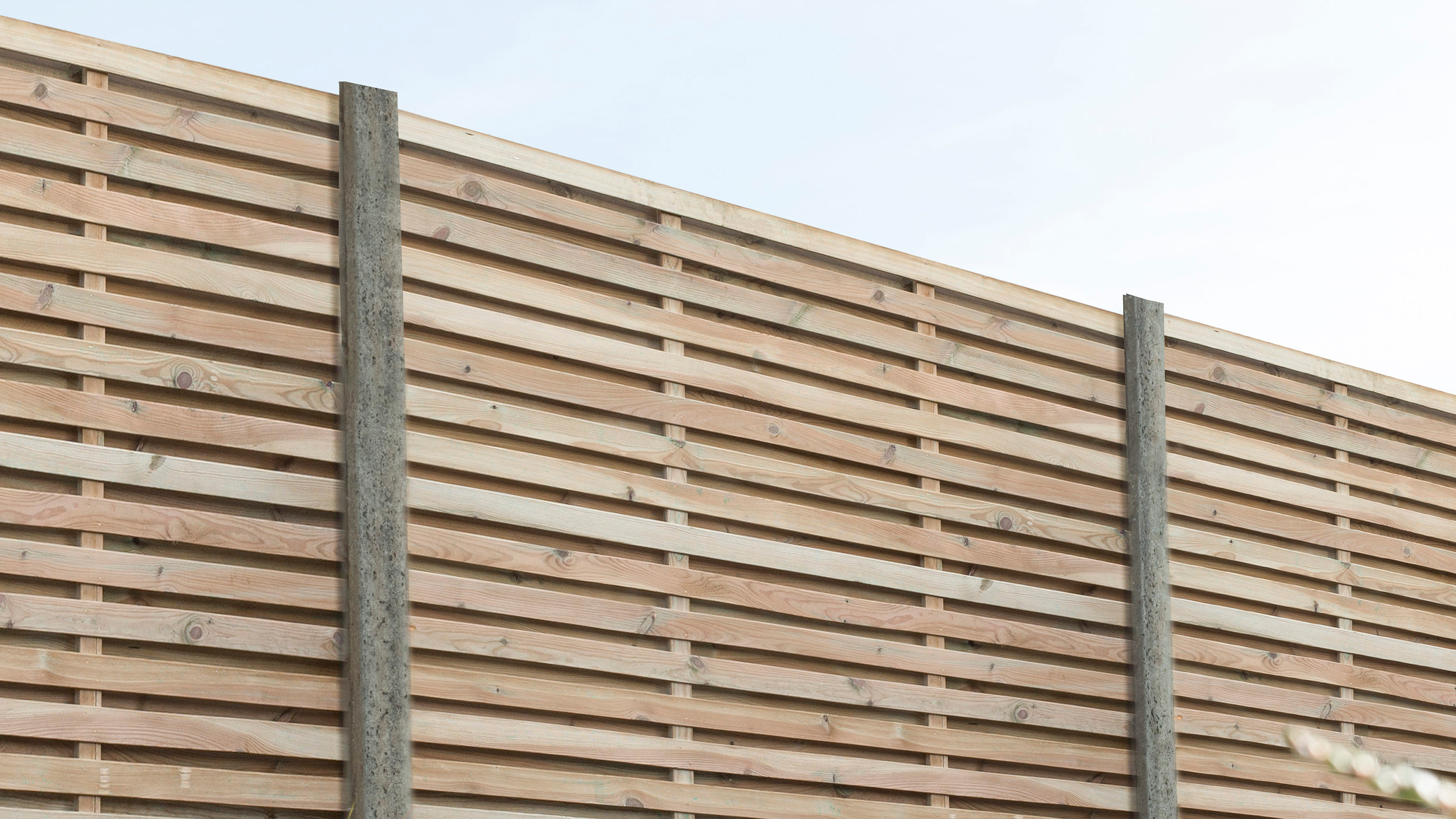
Pros and cons: double slatted fencing
- Robust and secure
- Suits contemporary schemes perfectly
- Good privacy
- Looks good from both sides
- Lets a little air through to prevent wind damage
- Expensive
- Hard to paint or stain
5. Hit and miss fencing
"Hit and miss panels feature a semi-solid design that provides privacy while still permitting air and light to pass through," explains Leigh Barnes.
It comes in a range of styles to suit both contemporary and traditional garden styles and is a little like double slatted fencing in that it features boards that are mounted alternately to the back and front of vertical battens.
However, the panels tend to overlap each other more than with slatted and are commonly contained within a rebated frame around each panel so offer more in the way of privacy.
Just ensure if you are installing fences of any kind, you've checked whether you need planning permission for fences.
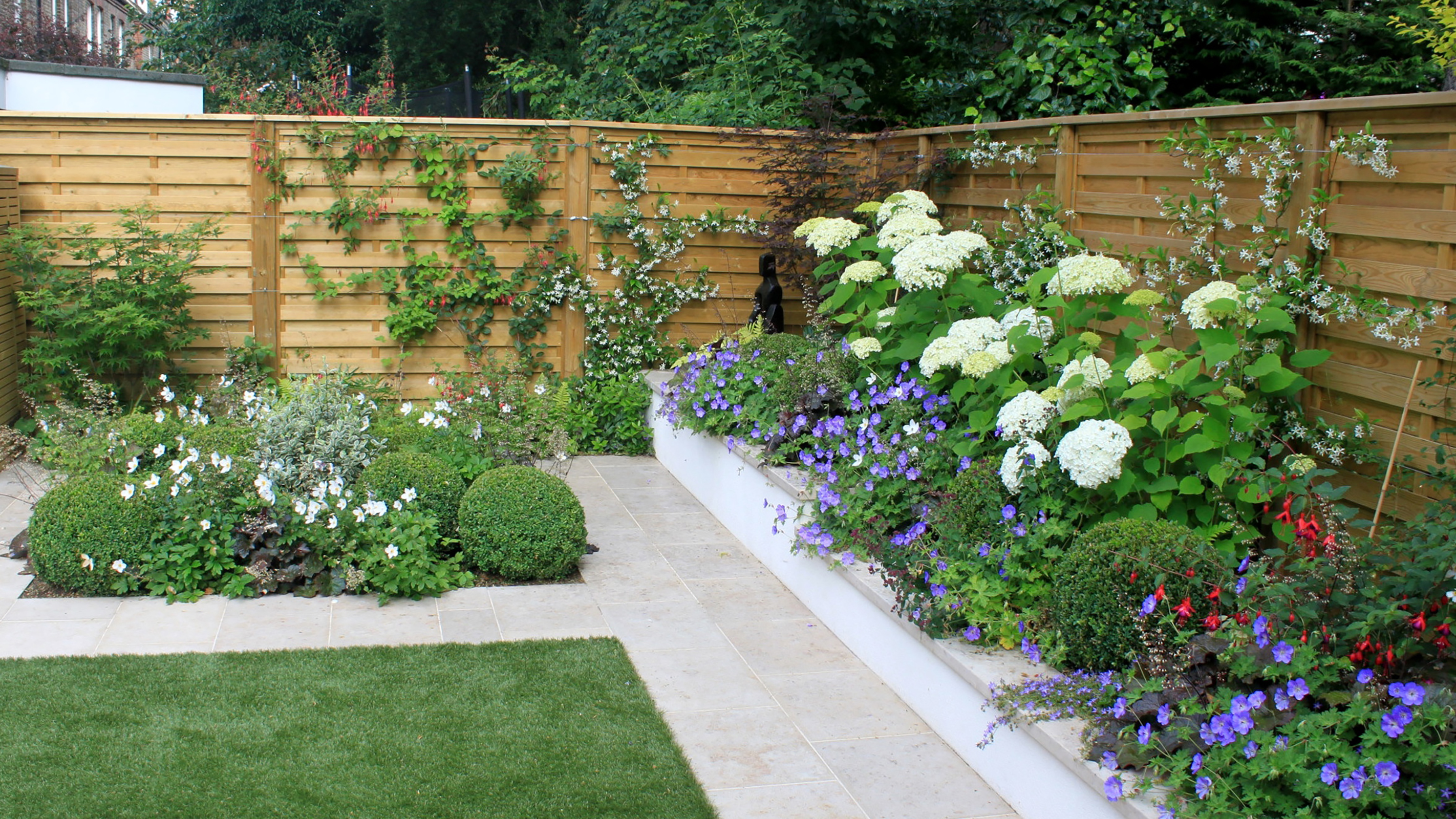
Pros and cons: hit and miss fencing
- Visually attractive
- Suits both modern and traditional scheme
- Good privacy levels
- Sturdy
- Weeds can grow through slats
- Fiddly to stain and paint
- On the pricier side
6. Picket fences
Picket fences are perfect for those after unobtrusive fencing that's perfect for front garden ideas. They are typically rather low in height, with a good space between each timber. They are great for creating kerb appeal and neatening up front gardens or for separating areas of the garden off from one another. They can also be used around ponds or swimming pool as an additional zoning or safety barrier.
Where they fall down is in their ability to visually screen areas. Their low stature won't keep all dogs from crossing them and they offer little in the way of security.
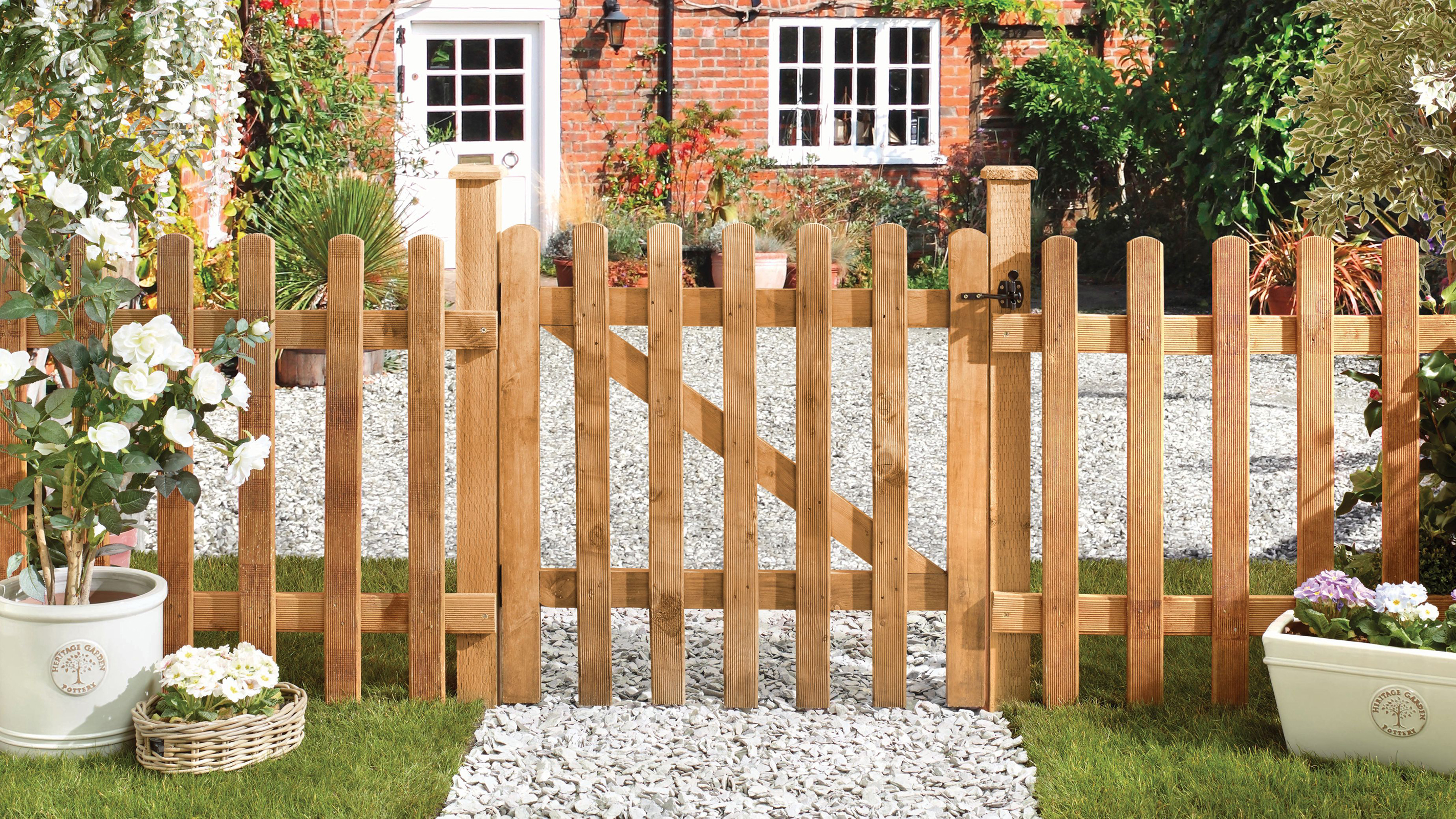
Pros and cons: picket fences
- Ideal for marking out individual areas of the garden
- Pretty and perfect for adding kerb appeal
- Easy to install
- Won't block a view
- Offer little in the way of privacy
- Not ideal for pet owners
- Do not offer security
7. Combination fencing
For an option that can suit a variety of gardens, another type of fence panel is a combi panels. "This combine a solid tongue-and-groove lower section with a Venetian-style top, offering both privacy and light," explains Leigh Barnes.
Although it typically comprises of lap, featherboard or hit and miss fencing with a lattice top, "using Venetian or slatted panels on the base allows airflow and light, making them also ideal for modern, open gardens," he adds.
The lattice top section offers lots of scope for injecting visual interest and designs vary from arched and wavy to straight. "Trellis-topped options can be a good compromise where you want height without creating a ‘walled-in’ feeling," suggests Jenny Davis.
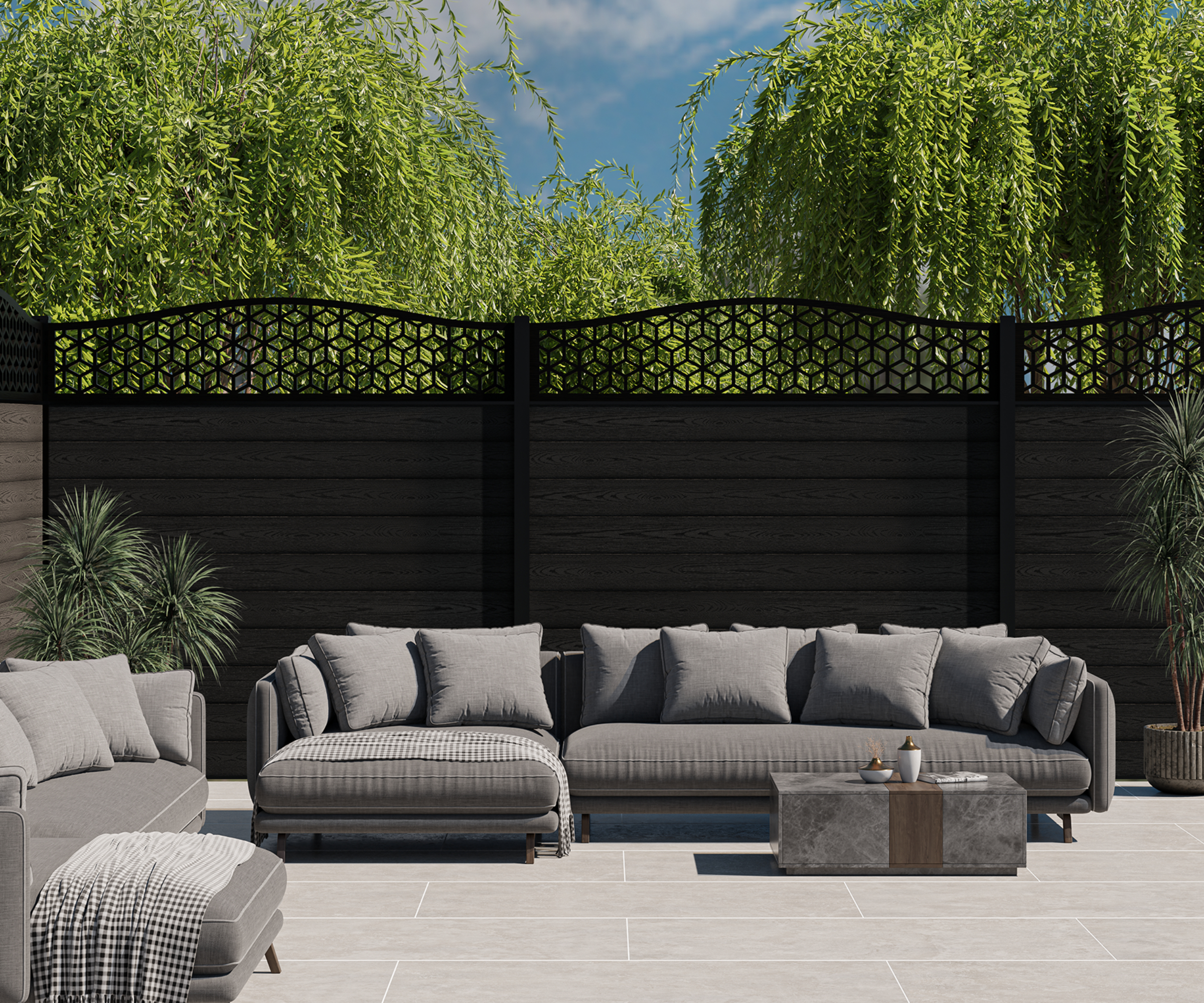
Pros and cons: combination fencing
- Good visual interest
- Can be used for climbing plants
- Offers privacy yet still allow light through
- More expensive than simple lap fence panels
- A little fussy for those after a sleek, contemporary look
- Only offer privacy up to a certain height
8. Natural screening
There are several different types of natural screening that can be used for fencing if you're seeking cheap fence ideas. Some of the most popular choices including hazel and willow hurdle panels, such as these Hazel Hurdle fencing panels from B&Q.
Natural screening panels are woven from coppiced hazel and willow and offer a surprisingly robust way to fence off your garden.
They are great for creating an English country garden feel and give a good amount of privacy, making them perfect for more natural garden screening ideas. Rolls of reed, bamboo and wicker screening are also another popular option. While not as secure or strong as timber fence panels, they can offer good privacy and weather-resistance.
This type of fencing is typically installed by fitting the panels between two fence posts before they are secured with wire or twine.
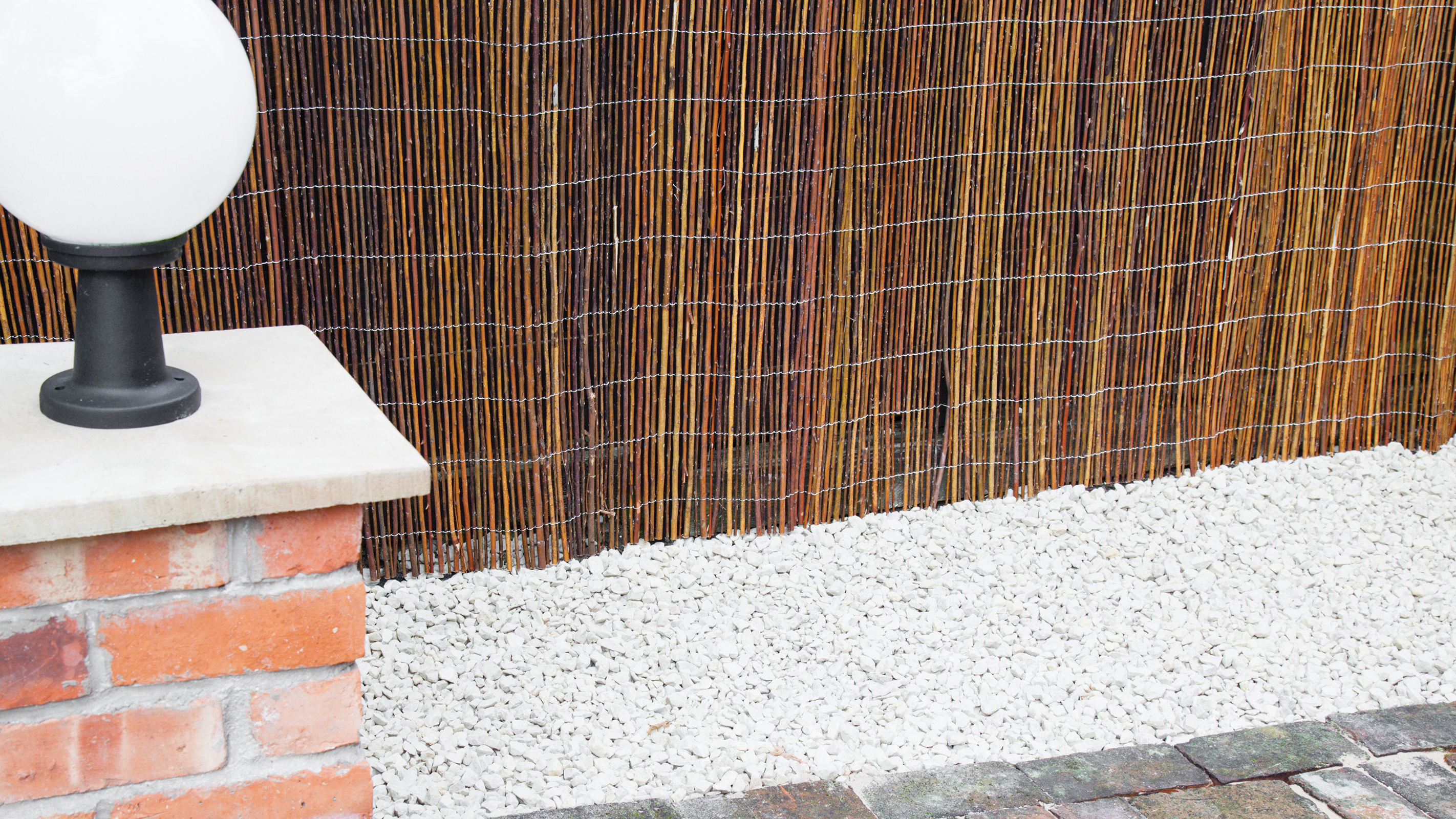
Pros and cons: natural screening
- Great for traditional schemes
- Easy to install
- Many different price options to suit all budgets
- Water-resistant
- Don't offer much in the way of security
- Can be prone to wind damage
9. Composite fencing
For those of you looking to understand what is composite fencing, it is made from wood fibres (or sometimes bamboo fibres) mixed with plastic. It is available in many finishes, from those that mimic the natural appearance of timber to those that are designed to look ultra modern.
Due to their uniform appearance they tend to mainly be specified by those after a more modern look to their outdoor spaces.
They are simple to install (often they are sold as modular sets) designed to slot into matching fence panels and are generally considered easy to look after.
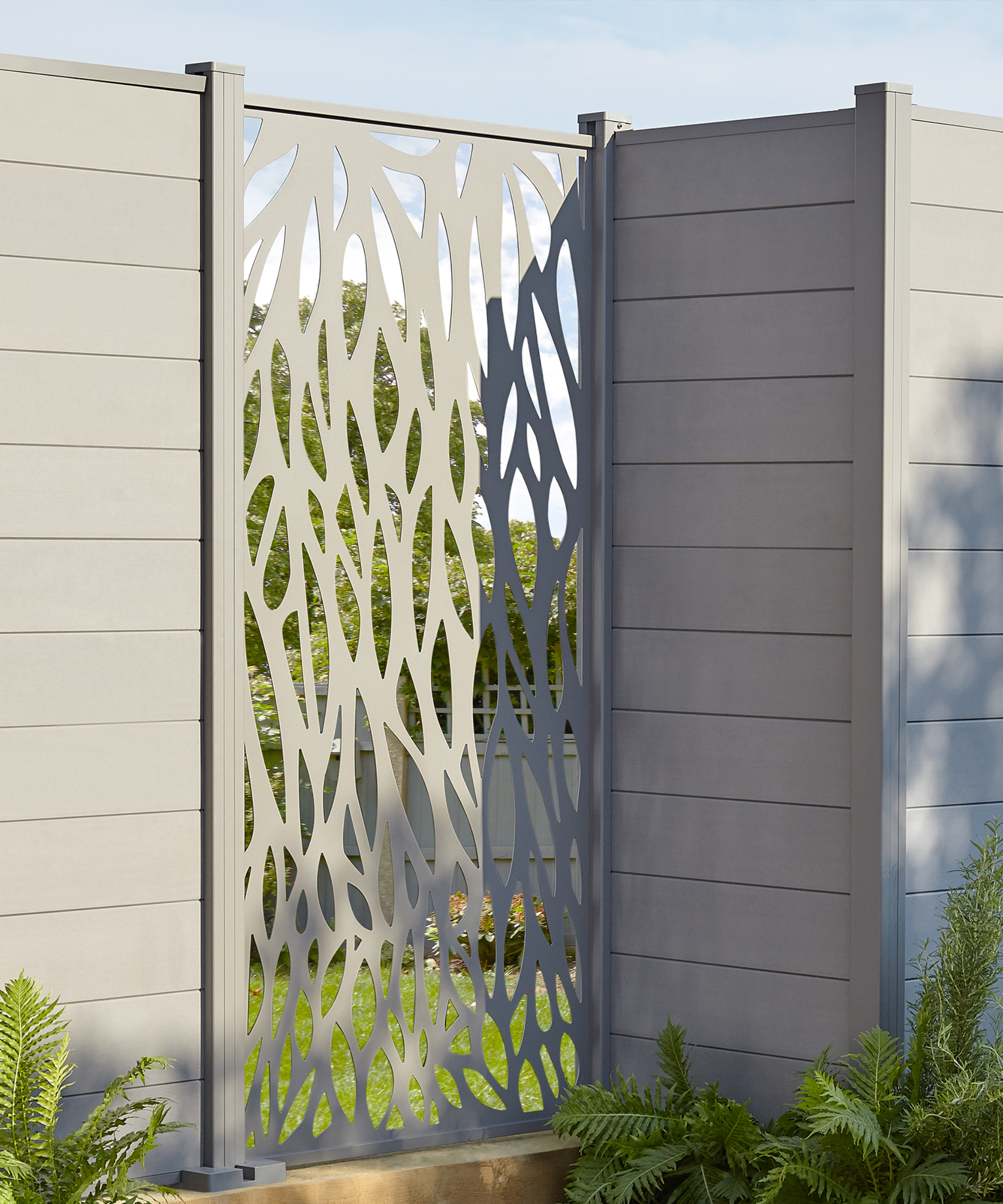
Pros and cons: composite fencing
- Straightforward installation
- Low maintenance
- Won't warp or rot
- Lack natural beauty of timber
- Hard to repair if scratched or damaged
- More expensive
10. Metal fence panels
If you want your fencing to make a design statement in your garden, why not consider decorative metal fence panels? They can be used in long runs or, as is more commonly the case, as stand alone panels within a run of timber fencing or hedging.
Steel is a popular material for metal fence panel, either galvanised or given a coat of weather-resistant paint. Corten steel and powder-coated aluminium are other popular options.
While they are visually very striking, if you are looking for a low-cost fencing option, then this might not be the right choice for you.
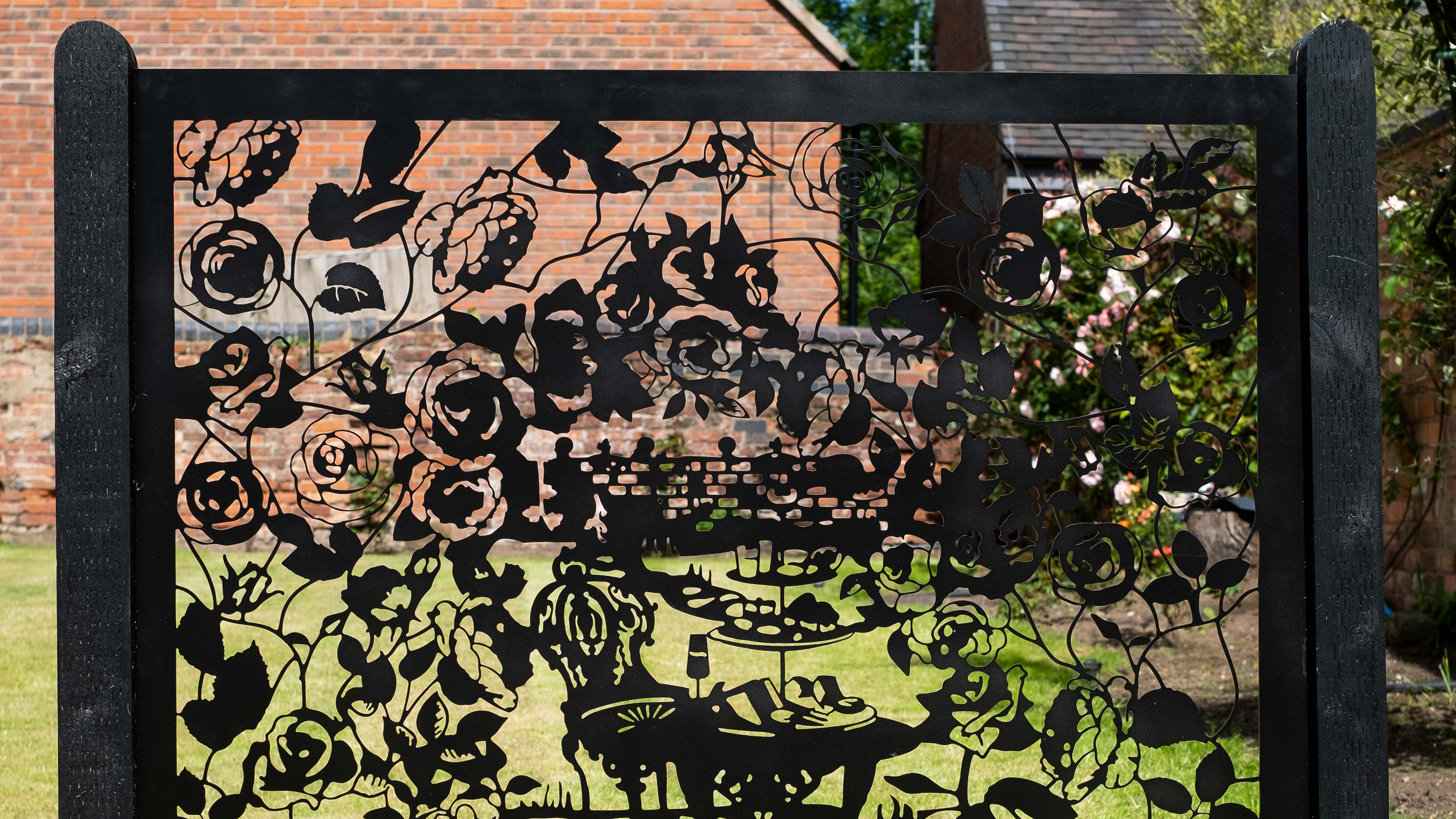
Pros and cons: metal fence panels
- Eye-catching and visually attractive
- Can be used as a garden focal point
- Durable
- Robust
- Expensive
- Heavy
- Not always suitable where large areas of fencing are required
FAQs
What's the best fencing for noise reduction?
Noise reduction fencing is designed to block sound out and is perfect for homes near busy roads or with close neighbours.
For effective noise reduction, dense, solid panels, particularly specially designed acoustic fencing are the most effective. Solid timber or acoustic panels work by blocking and absorbing sound, helping to reduce both street and garden noise.
Many premium fencing brands now offer acoustic panels specifically designed to reduce noise. Stylish timber soundproof fencing like Jakoustic® or 12K Envirofence® by Jacksons Fencing and can reduce noise by up to 28dB.
On the downside, this fence type will usually come with a more expensive price tag. For more advice on creating a quieter outdoor space, take a look at our guide to soundproofing a garden.
What's the best fencing type for privacy?
"Solid fencing such as closeboard or vertical board panels are best for privacy fence ideas, as they block all sightlines and offer a secure boundary," says Jenny Davis. Size matters too of course, she notes, "as the taller the panel, the more privacy you’ll get."
But if privacy in smaller gardens is your issue, "or in situations where maintaining natural light is important, combining solid panels with trellis sections or fence toppers can allow light to enter while still preserving privacy, creating a balance between seclusion and brightness and increasing aesthetic appeal," suggest Leigh Barnes.
What is the cheapest fence type?
While investing in high quality fencing with a long guarantee will help you avoid having to repair and replace it in the future, there are also ways to reduce costs initially," says Leigh Barnes.
"First, check the height you need. Garden fence panels are typically 1.8 metres high, but slightly lower heights such as 1.65 metre panels are cheaper without being drastically shorter. However, ensure shorter heights do not compromise your privacy needs," he says.
"Always include gravel boards underneath to protect the fence from rot and add extra height. In addition, look for a comprehensive guarantee that does not require additional staining and painting over its lifetime to comply, as the cost of the paint or stain also adds up – not to mention the hours it’ll take," he warns.
"Keep in mind that traditional kit-form fences may take longer to install," he adds. "so plan both time and budget accordingly."
How long should fencing last?
"The lifespan of fencing largely depends on the materials used and how well it is installed and maintained," says Leigh Barnes.
"Properly treated timber fencing can last between up to 25 years, offering long-term reliability. Additionally, long-term guarantees offered by manufacturers are often a strong indicator of both the quality of the materials and the company’s confidence in the durability of their product, but do read the fine print as to what is expected to comply."
Composite also offers a long life span with a quality product that's well maintained expected to last upwards of 20 years.
What fence posts will I need for different fence types?
Finally, if you are going to have a fence, then you are going to need fence posts to secure it into place.
You have three main options when it comes to choosing fence posts: wood; concrete and steel.
"Timber posts are popular because they secure panels firmly, are lighter to transport, blend naturally with garden environments, and are environmentally friendly. However, they do require pressure treatment to prevent rot and insect damage, which is an important consideration for longevity," says Leigh Barnes.
"Concrete posts, on the other hand, are extremely durable and strong, making them particularly suitable for windy locations. Their main drawbacks are that they are heavy, have a higher environmental impact, and do not keep panels secure," says Leigh.
Galvanised steel timber posts are a great option if you want something lightweight, easy to fit and long-lasting. While they might not appeal to those after an all-natural classic looking finish to their fence, they do come in a wide range of colours to suit many schemes.
Our experts final tips for getting the most out of the fencing type you choose? Make sure your installation is done well.
"There are several practical tips to keep in mind," says Leigh Barnes. "Using ready made post-fixing mixes is recommended rather than generic concrete, as these are designed specifically to hold posts securely.
"Panels should always be screwed firmly to posts to prevent rattling or unauthorised removal, and again, including gravel boards at the base of the fence helps protect from ground moisture. Following these guidelines will help ensure a fence is both sturdy and long-lasting."
Prefer something more green for your boundaries? We weigh up the pros and cons of fence vs hedge, and also recommend these fast growing hedges if you are in need of a quick and natural privacy fix.
Natasha was Homebuilding & Renovating’s Associate Content Editor and was a member of the Homebuilding team for over two decades. In her role on Homebuilding & Renovating she imparted her knowledge on a wide range of renovation topics, from window condensation to renovating bathrooms, to removing walls and adding an extension. She continues to write for Homebuilding on these topics, and more. An experienced journalist and renovation expert, she also writes for a number of other homes titles, including Homes & Gardens and Ideal Homes. Over the years Natasha has renovated and carried out a side extension to a Victorian terrace. She is currently living in the rural Edwardian cottage she renovated and extended on a largely DIY basis, living on site for the duration of the project.

